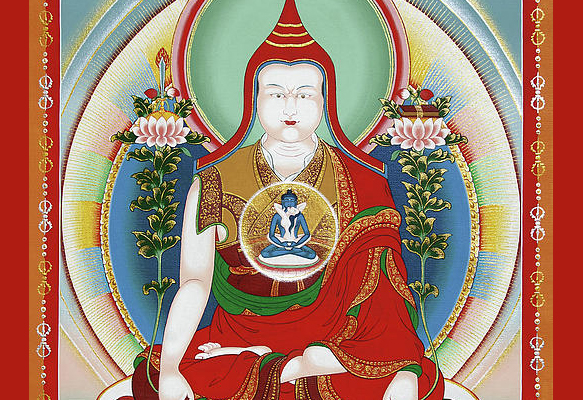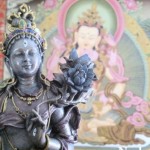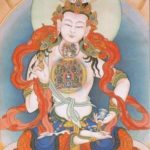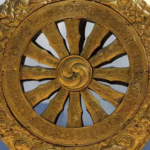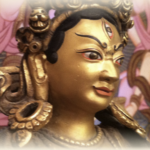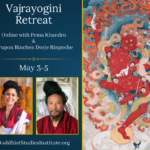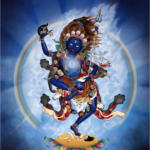“What shall I do when forever emotional reactions and frustrations are raging in tumultuous waves? Then quickly don the armor of perseverance,
and in order to let the turbid state of mind and mental events be cleared,
set out on the path of sheer lucency, of immaculate pristine cognition,
and let no obstacles impede the road to limpid clearness and consummate perspicacity.”
– Longchenpa (1)
This passage describes some pithy advice in terms of three key elements the Great Perfection teachings (Dzogchen): intention, emptiness and awareness. What do we do in times of emotional tumult? Longchenpa advises a combination of a determined attitude, and perseverance. Perseverance and a sense of persistent acceptance of discipline is one of the major features of the Buddhist practice. I have often heard people say that when an obstacle came up, they saw that as a “sign,” and gave up. If obstacles are a sign, they are a sign that we should persevere. Obstacles are inevitable in life. Growth requires discipline and discipline gives meaning and depth to our lives. I appreciate this passage because it displays a kind of motivation or inspirational element to Buddhist practice. It is not just a matter of applying a technique, but also a rousing of a determined attitude.
Longchenpa advises the reader to “don the armor of perseverance,” in order to let the mind and mental events be cleared. That sentence has a thousand years of Buddhist philosophy behind it – the idea that our mental and affective states are insubstantial. Even though the the mind might feel quite thick or solid, ultimately it is not concrete. It is “empty” and therefore can be changed or cleared. Usually in times of high emotion, we focus on what we can do or try to analyze our way out of the problem. We may plot and plan and assign blame. This is a different approach. The focus is on returning to a sense of lucid presence. In this passage, it advocates the cultivation of a keen presence, the “pristine cognition,” (Tib. ye shes) which is an innate capacity for wakefulness that every person has inside them.
Longchenpa was a highly respected yogi, scholar and teacher remembered as a major figure in Tibetan Buddhist history. He is a key figure of the Nyingma lineage who systematically explained the Great Perfection teaching at the turning point in Tibetan history between the old lineages and emerging new translation schools. This passage is from Guenther’s translation.
– Pema Khandro
1. Guenther, Herbert V. Kindly Bent to Ease Us, Part One: Mind. Emeryville, Calif: Dharma Publishing, 1975. Page 8.

